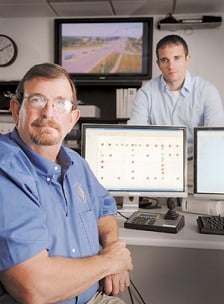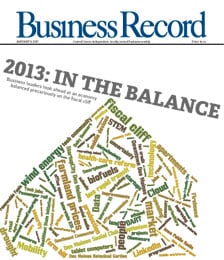Traffic bigger part of West Des Moines planning

.floatimg-left-hort { float:left; } .floatimg-left-caption-hort { float:left; margin-bottom:10px; width:300px; margin-right:10px; clear:left;} .floatimg-left-vert { float:left; margin-top:10px; margin-right:15px; width:200px;} .floatimg-left-caption-vert { float:left; margin-right:10px; margin-bottom:10px; font-size: 12px; width:200px;} .floatimg-right-hort { float:right; margin-top:10px; margin-left:10px; margin-bottom:10px; width: 300px;} .floatimg-right-caption-hort { float:left; margin-right:10px; margin-bottom:10px; width: 300px; font-size: 12px; } .floatimg-right-vert { float:right; margin-top:10px; margin-left:10px; margin-bottom:10px; width: 200px;} .floatimg-right-caption-vert { float:left; margin-right:10px; margin-bottom:10px; width: 200px; font-size: 12px; } .floatimgright-sidebar { float:right; margin-top:10px; margin-left:10px; margin-bottom:10px; width: 200px; border-top-style: double; border-top-color: black; border-bottom-style: double; border-bottom-color: black;} .floatimgright-sidebar p { line-height: 115%; text-indent: 10px; } .floatimgright-sidebar h4 { font-variant:small-caps; } .pullquote { float:right; margin-top:10px; margin-left:10px; margin-bottom:10px; width: 150px; background: url(http://www.dmbusinessdaily.com/DAILY/editorial/extras/closequote.gif) no-repeat bottom right !important ; line-height: 150%; font-size: 125%; border-top: 1px solid; border-bottom: 1px solid;} .floatvidleft { float:left; margin-bottom:10px; width:325px; margin-right:10px; clear:left;} .floatvidright { float:right; margin-bottom:10px; width:325px; margin-right:10px; clear:left;}
Jim Dickinson calls it “our crystal ball.”
A computer system that combines land use planning and traffic simulation has helped West Des Moines look into the future of how the city west of Interstate 35 will develop and what roadway system it will need to handle that growth.
Driving this change in roadway planning was the development of Jordan Creek Town Center, followed by Wells Fargo Home Mortgage’s one-million-square-foot office complex, in the early part of the decade, which dramatically changed the city’s traffic pattern. Today West Des Moines’ population doubles during the day to 116,000 from its nearly 57,000 residents.
“In West Des Moines you do a 20-year or 30-year traffic projection and in four or five years, because some development comes in, you’re there right now,” said Dickinson, the city’s transportation engineer. “So we’re looking at a full-build scenario. We’re planning for the ultimate.”
As city planners update West Des Moines’ comprehensive plan this year, traffic engineers are working on an ultimate streets map that complements expected growth. West Des Moines’ street plan looks farther west than the Alice’s Road/105th Street overpass going in now to near Van Meter and south of the Raccoon River.
By combining traffic data for proposed development on each parcel and importing it into a simulation program, engineers can determine whether the roadway system can support the kind of development the comprehensive plan proposes or whether changes to zoning or size of streets need to be made.
The benefit in this approach is that the city can more accurately plan for its roadway needs and gain the right-of-way space needed to expand streets to handle additional traffic in the future, even if the city only builds half of the planned roadway now. This prevents potentially expensive issues later on, traffic engineers say, especially after developers have put in buildings, signs and landscaping along the road. But it also helps keep the city from building too much roadway and having to pay for maintenance.
As an example, Dickinson said Jordan Creek Parkway south of Wells Fargo and Mills Civic Parkway west of Jordan Creek Town Center each have three lanes now, but the city has space to add three additional lanes when needed. Around the mall, the six lanes the city built initially are already needed to handle the amount of traffic in that area, whereas before, the city might have underestimated the amount of traffic and have to expand already.
“The advantage is planning that out before all the buildings get out there,” said Eric Petersen, associate traffic engineer for West Des Moines. “While it’s cornfield today, trying to plan that out rather than building that two-lane road and then realizing you need four lanes.”
Neal Hawkins, associate director of traffic operations for the Institute for Transportation at Iowa State University, who helped West Des Moines develop its modeling system, said the city’s method of planning is not unusual but important given its fast-paced growth.
“Using existing traditional methods wasn’t serving their needs,” Hawkins said. “They needed a little more level of detail and to be a little more dynamic in terms of wanting to see the impact of traffic and make decisions about it. As you can imagine, their picture was changing pretty quickly.”
How it works
In 2005, the city contracted with the Institute for Transportation (then the Center for Transportation Research and Education) for $120,000 to help it develop its current traffic modeling system. Hawkins said he looked at how to blend existing tools the city was already using to create a more automatic and standardized system for looking at how land-use designations could affect traffic.
Using these tools, the Traffic Department has worked with city planners as they update the city’s comprehensive plan. The planners input land-use designations for each parcel in the plan into an Excel sheet – now about 8,000 rows long. Then the traffic engineers assign the amount of daily trips expected in and out of each parcel using trip generation rates from the Institute of Transportation Engineers and making some assumptions about what kind of development each parcel will have, such as a restaurant, big-box store or office.
These figures are then assigned to the roadway network and imported into Synchro, a software program that has been used for many years to simulate traffic signal timing. West Des Moines’ system allows it to also run simulations on proposed intersections and streets to calculate things such as delays and capacities in the system. Synchro assigns each intersection a grade level (A through F) based on level of service, which helps the traffic engineers decide where to look at adding more lanes, adjusting streets and even changing the zoning of an area.
This can be especially useful in addressing how many right and left turn lanes are needed and how long the lanes should be, a main concern for cities, Hawkins said. It also helps look at the impact of adding features, such as a median break, which developers may want.
Hawkins, who did the Jordan Creek Town Center traffic impact study as a consultant mostly by hand, said this system is much more convenient and it also has made it easier to visualize traffic scenarios as the software has improved over the past five years.
A say in planning
Petersen agreed that a three-dimensional simulation capability especially helps planners and city leaders better visualize how a development can affect the roadway system. And it can help engineers make a more convincing case about traffic problems when a developer approaches the city about putting in a major development.
Clyde Evans, director of community and economic development for West Des Moines, agreed that the model has helped the city council and staff make more informed decisions about land-use designations and projects being proposed rather than dealing with traffic problems on a case-by-case basis.
“It’s another evaluation tool,” Evans said. “It’s not an end-all type thing. Ultimately the council makes a decision on land use based on what they feel is the most appropriate direction for us to go, but it is a good tool for us to know, OK, if we do this, this and this, we’ll be fine in terms of traffic distribution or we may have some issues to address.”
West Des Moines would like to eventually extend this traffic model to the entire city, encompassing areas already developed east of Interstate 35. This would help the city be better prepared for situations such as if a landowner wanted to redevelop several parcels in an already built-out area, Peterson said.
Though the modeling system “is not perfect,” Dickinson added, “it’s sure a lot better than the way we used to do things.”






